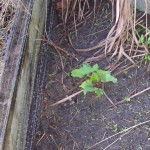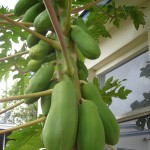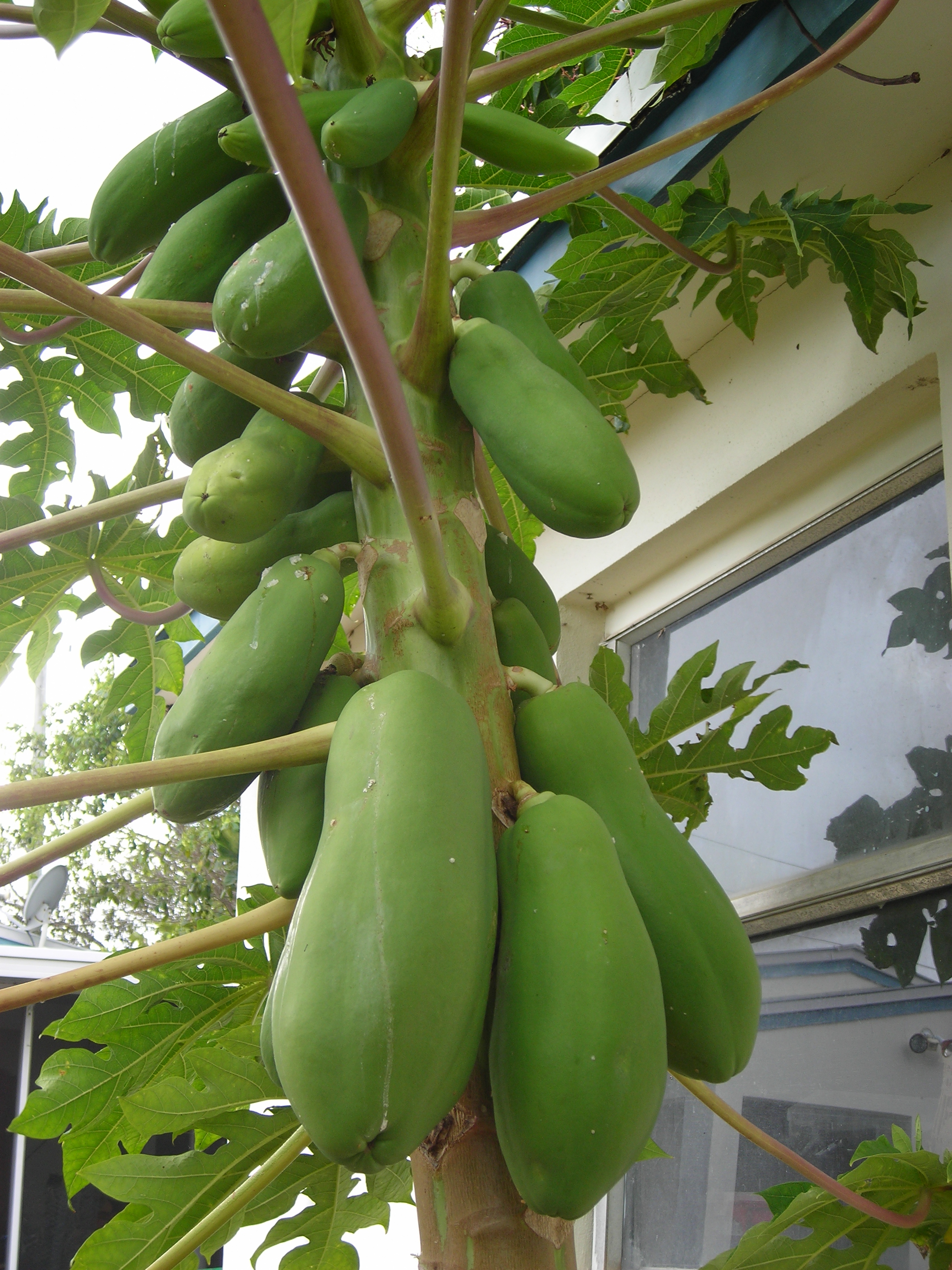I’ve been working at gardening in my back yard for almost two years now, and I’m guilty of a bad habit. From time to time, I’ll take seeds and randomly scatter them across the yard to see what happens. Most of them either decompose, or get eaten by one of my foraging birds, but occasionally, one will germinate and grow into something, and I get to play the “What is it?” game.
One of my raised beds is doing that now. I used it as a kitchen scrap/compost dump for three months between plantings, and I think I now have some tomato volunteers popping up in between my peppers I planted a few weeks ago. I’ll let them grow a bit, and once I confirm they are tomatoes, I’ll relocate them, as tomatoes transplant well.
I started some sweet potato slips about a year ago, and now have volunteers all over the yard. I appreciate this, since in addition to the tasty tubers, sweet potato leaves are a tasty replacement for spinach, which doesn’t grow well here.



Once, I scattered a packet of crushed rep pepper flakes I picked up at the snack bar at Sam’s (the big box store). It had enough seeds in it to make me think it was possible, and I actually had a plant grow that produced some small, red peppers that looked like miniature jalapenos crossed with cayennes. The only problem is that they had ZERO heat, so were a dud, at least taste-wise.

Basil is a common item to pop up near the raised beds, and I have one right now showing its tasty little head. Bonus!
 The largest one to date is a papaya tree what is taller than my shed roof, and is almost to the bursting point with the fruit it has on it.
The largest one to date is a papaya tree what is taller than my shed roof, and is almost to the bursting point with the fruit it has on it.  It originated from a papayas that went far past the “ripe” stage into decomp when I wasn’t looking, something that happens often when you buy non-treated food. (Any fruit or vegetable that won’t rot in a timely fashion scares me – who wants to eat zombie/mummy-like food? Die & rot already!) I threw the remains into a raised bed as compost, and 6 months later I have this. I was pleasantly surprised. May have to do it again…I’m not a huge fan of eating papaya, but it has two alternative food options that I do enjoy.
It originated from a papayas that went far past the “ripe” stage into decomp when I wasn’t looking, something that happens often when you buy non-treated food. (Any fruit or vegetable that won’t rot in a timely fashion scares me – who wants to eat zombie/mummy-like food? Die & rot already!) I threw the remains into a raised bed as compost, and 6 months later I have this. I was pleasantly surprised. May have to do it again…I’m not a huge fan of eating papaya, but it has two alternative food options that I do enjoy.
One of them being an enzyme, papain, that acts as a natural meat tenderizer. This can be collected from the green fruits in the form of sap (click on the fruit pic to see the white sap spots -that’s papain). You can also get the same affect by incorporating the chopped up fruit in a marinade. I’ve read that this is the substance beef producers use to make older, tougher beef into a more tender, thus more expensive grade of beef. Here is what I read
The most successful ante-mortem process is the Proten process developed by Swift and Company Limited, Chicago, IL (Warner et al., 1976, British Patent No. 1,448,498). In this process a concentrated solution of papain is injected into the jugular vein ten to thirty minutes before slaughter at a dose-rate of 2-5 ppm. This process utilizes the heart and vascular system for enzyme distribution, thus permits an even distribution of enzyme in the muscle.
Source: http://patents.justia.com/1987/04677069.html
Ouch!
The other use, and for me, the main one, is the seeds. When cleaned and dried, they make a very nice black pepper substitute, with the black pepper bite, along with hints of horseradish. Ah, sweet bliss!
This means I can actually make my own salt (from local seawater, yes, I’ve done that before too) and grow my own black pepper! All be adding those two trade items to my “South Florida Swamp Moonshine” I would be making, if I end up surviving a post apocalyptic hell. (yes, BC, I went there! Sorry, there is no telling where a tangent will lead me…)
As to the volunteer plants, I’ve only mentioned those that have started to grow in my yard from my own actions. I’ve not mentioned any of the local wild edibles I have available yet, That would be the subject for a future post….
I’ll close by saying that once you start gardening, you’ll learn first-hand how tenacious life can be, and if your are lucky, you may end up with even more quality food on your table. That can’t be a bad thing…..

Howdi from the Philippines,
I’m a San Francisco, CA native and grew up saying “Yes, M’am” and “No, Sir” a lot – since a number of my best friend’s families were from the South. A family member just wrote to me about your site since I’m planning on raising some rabbits for meat. I figure your weather is similar (Here in Rizal, Philippines we have a dry and wet season with an average day time temp in the mid 80’s to 90’s with only at 15 degree drop at night) or at least closer than most others writing about raising rabbits.
One thing I picked up from the locals here is the different ways to eat tropical fruits. Like when the fruit are still green they can be grated and pickled or eaten raw in salads. They can also be cooked like chayote aka christophenes. My favorite way is waiting until they get sweet but are still crisp – it’s an excellent replacement for the apples which I sometimes miss. And if you finally get a variety that doesn’t taste (it’s really the smell of the papain that smells) like puke they are great with the juice of any sour citrus. Using a little lemon or kalamansi juice (the local tropical lime) both knocks out the papain scent and makes the flesh taste sweeter and refreshing.
So far have only read two of your post but so far you got some great stuff in here!
Rabbits raising methods are just one of the many adjustments I’ve had to make due to the climate. Know that it CAN be done, and it gets easier as you go along.
I’m learning a lot about tropicals from my friend from Thailand. She feeds me from time to time, and its never bad, just different. Some of it I truly enjoy, so she’s been a great resource.
Thanks for the kind words, and don’t hesitate to ask any questions you may have, I’ll see about getting you some answers.
db
Free food is good food!